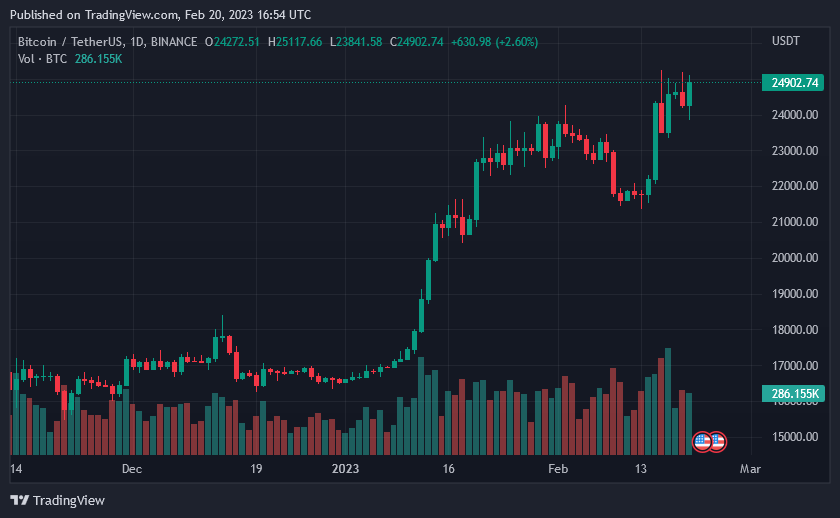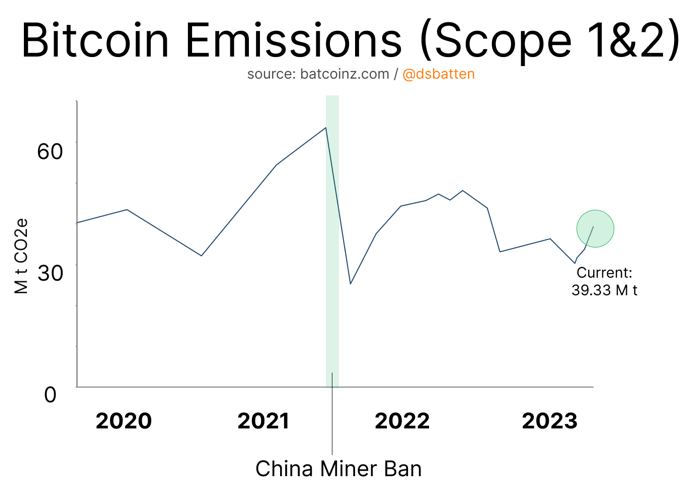Bitcoin, the world’s most secure blockchain by hash rate, has been growing its sustainable energy mix at a rate of 6.2% over the last two years, David Batten, a ClimateTech venture capitalist, notes in a tweet posted on February 20.
Bitcoin’s Sustainable Energy Base Rising
At this pace, David explains, the growth of Bitcoin’s sustainable energy base is one of the fastest in the industry and is an “impressive” feat for any platform or major player in any demanding sector.
1/4
Having a model means we can start building charts
Here's 4 new charts for Bitcoin & Energy#Bitcoin has grown its sustainable energy mix @ 6.2% p.a from Jan 2020
* 6.2% growth rate is faster than any major industry
* 52.6% Sustainable mix is ⬆️ any major industry— Daniel Batten (@DSBatten) February 20, 2023
Accordingly, Bitcoin has a sustainable energy mix of 52.6%, up from around 32% in mid-June 2020. The sustainable energy mix is a metric that indicates the pace at which a platform or an industry uses sustainable and renewable energy to power its operation. Renewable energy sources cannot be exhausted but can some can also be unsustainable.
However, if sustainable renewable energy sources like wind and hydro are harnessed to power operations without harming the environment, an industry using this system would drastically push its sustainable energy mix rating.
Over the years, hydro, solar, and wind sources have proven adequate. They have been widely tapped by Bitcoin miners to power energy-demanding mining rigs.
Bitcoin Miners Reliant On Renewable Energy Sources
Considering David’s findings, Bitcoin miners have gradually increased their sustainable energy sources to power energy-hungry mining rigs.

Notably, it was observed that Bitcoin’s emissions have been trending lower since the Chinese government banned cryptocurrency mining in its jurisdiction in mid-2021.
Then, authorities in China argued that crypto mining operations increased their country’s emissions, directly contradicting their efforts to become gradually more dependent on renewable energy sources. The strict ban on crypto and Bitcoin mining operations and their objective of reducing carbon footprints follow their signing of the Paris Agreement in 2015.

Besides emission dropping, David claimed that Bitcoin’s emissions intensity has been falling in tandem. Emission intensity measures emissions released per KWH. This metric has decreased over the past years as more miners opt for renewable energy sources.
Bitcoin operates with a proof-of-work (PoW) consensus algorithm. It relies on a community of miners who operate rigs to verify transactions and secure the network.
As of writing on February 20, Bitcoin has a hash rate of 311.6 EH/s and a difficulty of 39.16T. Mining pools such as Foundry USA and AntPool dominate the BTC mining sector. The top two pools have a cumulative hash rate exceeding 50% of the total.





















